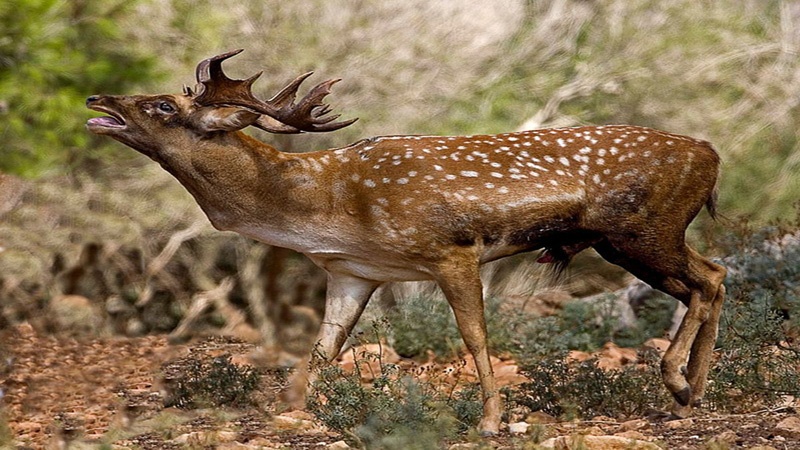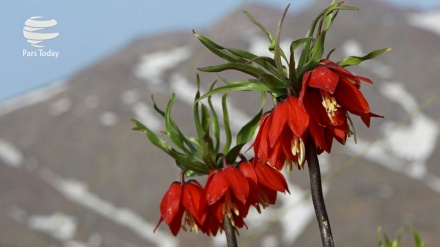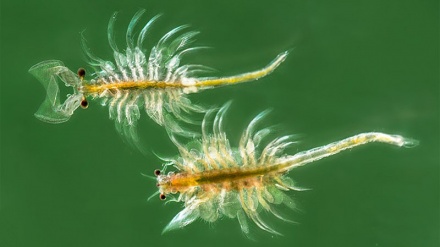Iran’s rare animal and plant species (7)
One of the rarest deer species in the world is Persian fallow deer, which has currently been included in the red list of the threatened species of the International Union for Conservation of Nature (IUCN).
According to facts and figures, large swathes of western and southwestern Iran were the habitats of this animal in the past. Based on the existing inscriptions within the historical monuments of the city of Kermanshah in western Iran, paramount importance was attached to this animal in ancient Iran. Around fifty years ago, some believed that Persian fallow deer no longer existed in Iran. However, all of a sudden, a few of them were spotted on the banks of River Dez and River Karkheh in southwestern Iran, which is the historical habitat of Persian fallow deer, raising a golden opportunity to save these endangered animals. Currently, this animal is no longer on the verge of extinction, but remains vulnerable.
Persian fallow deer is a subspecies of European fallow deer. It is relatively larger than European fallow deer. The length of its body and head varies from 150-200 centimeters. Its tail stands at 16-20 centimeters in length, while its height totals 85 to 110 centimeters. This mammal weighs between 50 to 130 kilograms. This animal has white spots on its back and sides. The male Persian fallow deer has large and relatively wide antlers. The antlers growth starts as of the age of one. Late winter, antlers fall and new antlers immediately begin to grow, reaching their full size in summertime. These animals’ hair is short in the summer season. Throughout the summer season, their back and sides are reddish brown in color, while their lower limbs and tails are white. There are vivid white spots on their back and sides. In the cold season, its hair grows longer and turns grey in color, coupled with vague spots. This animal maintains powerful eyesight and is a skilled swimmer. Persian fallow deer is highly cautious in natural environments and swiftly runs away whenever it senses a threat. At times, he hides behind bushes and trees. It maintains a good capacity for camouflage in the summer season, due to its spotty skin.
Persian fallow deer usually eats weeds, plant branches and leaves. These animals usually graze early morning prior to sunrise, or in the afternoon, while spending the remaining period of time ruminating or resting. In case of presence of a farmland in the vicinity of their habitat, Persian fallow deer also goes to the farm for grazing at night. Persian fallow deer lives in groups, with the adult male and female deers settling in separate groups.
Persian fallow deer’s mating season is early fall. The male Persian fallow deer maintains an astounding and grand appearance; safeguarding its territory by making a sound, similar to the snoring sound. In this season, the male deers confront each other over mating. The more powerful male deers do not allow other male deers to enter their territory. The weaker male deers have no option other than seeking a new territory. Throughout the mating season, the male Persian fallow deers lose weight.
The pregnancy of female deers lasts around eight months. The Persian fallow deers usually give birth to one or two baby deers; with each baby deer weighing nearly four to five kilograms. Upon birth, the baby deers can walk and run. However, in the first few days, the female Persian fallow deers hide baby deers among long weeds. The baby deers easily hide from predatory animals, given that they are odorless and motionless, and can easily camouflage in nature. They reach puberty at the age of 1.5 years. Their lifespan is around 16 years. Meanwhile, in the view of experts, if an appropriate plan is adopted and safe living conditions are provided for this animal; these animals would grow in numbers in an acceptable manner.
In the past, these animals were present in large swathes of lands, stretching from west and northwestern Iran to northeast Africa, and southern Europe. However, currently, these animals only exist in thick forested regions of Khuzestan Province and Zagros, across the banks of River Dez and River Karkheh in southern Iran. Meanwhile, in order to prevent the extinction of Persian fallow deer, a number of them have been transferred to other locations, such as plains in northern Iran, and an Island in Uremia Lake in western Iran. As a result of these measures, this animal is currently in an appropriate condition.
According to experts, destruction of the habitats of this animal, excessive livestock grazing; irregular development of the industrial, agricultural, and service sectors; poachers; and tangible climate changes are some of the most important challenges that this rare animal is confronted with. However, park and forest rangers in Islamic Republic of Iran are making every effort to protect this animal.
MR/SS



